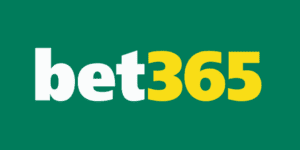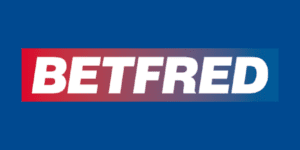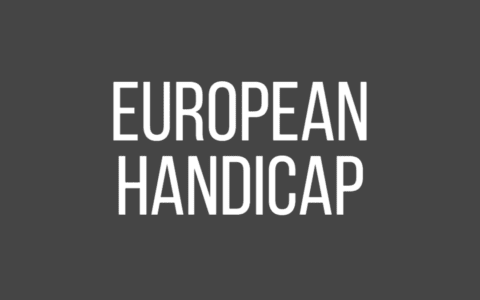- Asian Handicap markets level up the playing field by giving a virtual lead to the underdog.
What Is Asian Handicap Betting?
Asian Handicap (AH) betting is a popular form of sports betting that originated in Asia. It aims to level the playing field between two teams by giving one team an imaginary head start or “handicap” in terms of goals or points.
In Asian Handicap betting, the underdog team receives a positive handicap, while the favourite team gets a negative handicap. This means the underdog starts with an advantage, and the favourite must win by a certain margin to cover the handicap and win the bet.
For example, if a football match between Team A and Team B has an Asian Handicap of +1.5 for Team A, Team A starts the game with a 1.5-goal advantage. If you bet on Team A, you will win your bet if they win, draw, or lose by less than 1.5 goals. If Team B wins by 2 goals or more, your bet on Team A loses.
Conversely, if the Asian Handicap is -1.5 for Team A, they must win by 2 goals or more to cover the handicap and win the bet. If Team A wins by only 1 goal, draws, or loses, your bet on Team A loses.
It’s worth noting that in the United States, the term “point spread” is used instead of “handicap.” However, there’s no naming distinction between Asian Handicap and European Handicap markets, as there is in Europe.
The Appeal of AH
Asian Handicap betting is popular because it offers a more balanced betting option, especially for games where there is a clear favourite and underdog. It allows bettors to bet on the underdog team with a higher chance of winning, while still offering a competitive payout.
Asian Handicap markets achieve three things:
- More flexibility. By assessing the perceived bias between two teams, it allows bettors to select a market that fits their view on the match more effectively.
- Eliminates draws. In real life all goals count as whole numbers. Asian Handicap markets eliminate draws by applying decimal values for goal handicaps (e.g. -1.5/+1.5 and -2.5/+2.5).
- Evens out events. By applying a handicap to one team, the other has an improved chance of winning. Therefore the odds are evened out, making for steadier betting results with less variance.
I’ll elaborate on this last point – evening out events – in the next section.
Best Sites for Asian Handicap Betting
You can use regular bookmakers and betting exchanges to bet on Asian Handicap odds. For a wide range of markets, I recommend the following options:
1. Bet365
Bet365 offers a comprehensive range of Asian Handicap markets across football and other sports, including live in-play options. Their platform provides detailed explanations for each handicap line, catering to both novice and experienced bettors.
#ad. 18+, GambleAware.org, T&Cs Apply
2. Betfred
Betfred provides a solid selection of Asian Handicap lines, such as AH -1.5, AH -2.0, and AH +0.5. They also offer live betting on these markets, allowing for dynamic wagering during matches.
#ad. 18+, GambleAware.org, T&Cs Apply
3. William Hill
William Hill features Asian Handicap betting with options for split handicaps, like -1 and -1.5. Their platform ensures clarity by displaying only two outcomes, simplifying the betting process for users.
#ad. 18+, GambleAware.org, T&Cs Apply
4. Virgin Bet
Virgin Bet includes Asian Handicap markets in their offerings, providing bettors with alternative ways to wager on football matches by applying goal advantages or disadvantages to teams.
#ad. 18+, GambleAware.org, T&Cs Apply
5. LeoVegas
LeoVegas offers Asian Handicap betting, aiming to level the playing field between teams by assigning goal handicaps. This approach eliminates the possibility of a draw, resulting in two potential outcomes and often more balanced odds.
#ad. 18+, GambleAware.org, T&Cs Apply
Note: for some professional bettors, the liquidity and stake limitations at these sites may be too low. If you require higher limits, consider a “Winners Welcome” site like BetInAsia, which imposes no account restrictions.
The Basics of Asian Handicap Betting
Every Asian Handicap (AH) betting market is distinguished by the team name followed by a figures such as -0.5, +1.0, +1.5, -1.5, and so on. The figures go up and down in increments of 0.5 and each represent an imaginary head start, or a goals deficit, awarded to a team before kick-off.
The Betfair Exchange Asian Handicap Markets for Fulham vs Manchester United

For example, an Asian Handicap market would enable you to bet on the outcome of Fulham vs Man United after giving Fulham a theoretical +0.5 goals head start before kick-off (back @ 2.42, as shown above). This means that Fulham will win you the bet if they:
- Beat beat Man United. Their goal margin will just be exaggerated by an additional +0.5 goals. Or,
- Draw with Man United. For example, if the final score is 2–2, the Asian Handicap awards Fulham the additional 0.5 goals making it Fulham 2.5–2 Man United.
A loss for Fulham — even by a one goal margin — is not enough to win this bet because it means Man United still win by 0.5 goals. For example if the final score is 2–3, then the handicap makes it Fulham 2.5–3 Man United. Hence you lose.
Of course you can’t really win or lose a football match by half a goal. These markets do require a little bit of imagination!
Asian Handicap bets cover all kinds of matches, including games that are likely to be close and those where there’s a clear cut winner. They can be traded pre-match, or in-play — just like any other sports betting market.
Example: A Strong Favourite
Let’s suppose Spurs are playing Plymouth Argyle in an FA cup fixture.
It’s highly likely that Spurs will win this game (especially at home), and thus their price in the 1×2 market will be extremely short. Let’s say 1.1 for arguments sake.
The dilemma here is:
- Backing Spurs is not a particularly exciting bet to make, and the punter only stands to earn a very small profit. Most would consider this more risk than it’s worth.
- Backing Plymouth is a bet that’s highly likely to lose. Most punters would consider an alternative, more likely outcome to risk their money on.
The reality is that most bettors will feel as if this fixture doesn’t offer a lot of opportunity (or excitement) in the standard 1×2 market.
AH Levels Up The Game
Asian Handicap markets manipulate the scoreline, making for a more exciting proposition.
Let’s instead suppose you give Spurs a theoretical handicap, such as -2.5 goals before the match starts (“Spurs -2.5”). This is the same as Plymouth having a +2.5 goals head start before kick off. Does that even the game out a tad?
Yes, it does. Suddenly Spurs have really got to show their superiority.
They’ve got to win by three goals or more for the bet to come off — which is by no means guaranteed in any FA cup fixture. The odds in the Asian Handicap markets reflect this theoretical chance. You’d expect the odds for Spurs and Plymouth to be tighter together, as if they’re more evenly matched.
But exactly how superior will Spurs be on the day, if at all?
Team superiority is an area that I’ll address in the following section. You want to select the appropriate Asian Handicap market.
Which Handicap Market Should You Choose?
Let’s continue with the same Spurs v Plymouth example fixture and assume that we believe the populist view that Spurs will beat Plymouth Argyle in the FA cup.
If you’re looking to bet in the Asian Handicap markets, you need to decide how many goals you believe Spurs will beat Plymoth Argyle by. Will Spurs beat Plymouth by a fine margin (e.g. 1 goal)? Or will they annihilate them in a landslide victory (e.g. 6 goals)?
Note that Asian Handicap payouts do not reward you any more for a landslide win than a low-margin win, like Spread Betting goal markets do. You do however have the option to choose the appropriate market to take on more, or less, risk.
If you perceive the advantage Spurs has over Plymouth as being fairly small (accounting for the gulf in divisions), then you might opt to take odds on Spurs -1.5, for example. This gives (safer) shorter odds than those on Spurs -2.5 — because Spurs stand a better chance of overcoming a -1.5 goal start than a -2.5 start. The more goals to overcome, the less likely it is to happen, and the longer the odds will be.
Basically, it’s important to remember that there’s multiple Asian Handicap markets that exist for the same fixture. Your choice of bet ultimately depends on your analysis of the game.
Selecting the appropriate market is tricky, though. My advice, as always, is to focus on what market you believe offers value as opposed to making selections based what you believe will actually happen.
Types of Asian Handicap Markets
Confused by all the different variations of Asian Handicap markets available? Here are the main types with examples.
Round Number Asian Handicap Markets (e.g. -2.0/+2.0)
Some Asian Handicap markets use round numbers — such as -2.0/+2.0. The exact same handicapping process applies, as before.
The only difference here is that the draw outcome is not eliminated. In this scenario a team handicapped by exactly two goals (-2.0) could win by a two goal margin, thus creating a ‘draw’ with no winner.
In this occurrence, your stake is refunded. It’s as simple as that.
Asian Handicap +0 Market
The Asian Handicap +0 market allows you to bet on the winner of a game without ever losing money if a draw occurs. It works exactly the same as the ‘Draw No Bet’ market (i.e. no goal handicap is applied).
Imagine it’s Liverpool v Manchester United, and you predict Liverpool will only win by a very fine margin. By backing Liverpool in the +0 Asian Handicap market, you create a safety net whereby your stake is returned if the game is a draw.
Remember that in the Asian Handicap +0 market you are eliminating one of the three potential outcomes of the football match (the draw). So the odds will be shorter for winners.
Combined Asian Handicaps (e.g. +2.0 & +2.5)
This type of Asian Handicap market splits your stake equally across the two handicaps listed.
Let’s say you bet on Chelsea -2.0 & -2.5 against Brighton. Half your stake goes on Chelsea with a -2.0 goal start, the other half on Chelsea to win with a -2.5 goal start. It’s essentially two bets in one click.
Chelsea drawing or losing the game means you lose both bets. If they win by three goals or more, you win both bets. But if Chelsea win by exactly two goals you:
- Lose half your stake (the bet placed at -2.5), and
- Get half your stake back (the bet placed at -2.0).
Quarter Asian Handicaps (e.g. -1.25, +0.75, or -2.75)
You’ll find the “quarter” notation used on some Asian Handicap markets. It’s not a very intuitive format. Nonetheless it’s easy enough to unravel.
Quarter handicap markets split your stake into two separate bets, exactly as described in the previous section. The two stakes are placed on the Asian Handicap markets on either side of the quarter notation.
For example:
- -1.25 = -1.0 & -1.5
- +0.75 = +0.5 & 1.0
- -2.75 = -2.5 & -3.0
- +2.25 = +2.0 & +2.5
- -0.25 = +0 & -0.5
Just remember that the quarter notation denotes the mid-point of two separate bets. Its easy if you just subtract 0.25 to get reach the “below” market, and add 0.25 to reach the “above” market.
Quarter notation is unnecessarily confusing. But that’s as difficult as the markets get.
Chelsea drawing or losing the game means you lose both bets. If they win by three goals or more, you win both bets. But if Chelsea win by exactly two goals you:
- Lose half your stake (the bet placed at -2.5), and
- Get half your stake back (the bet placed at -2.0).
Why Do Professional Bettors Use Asian Handicaps?
Here’s my thoughts on why the Asian handicap markets attract so many professional bettors:
- Various statistics and other elements help bettors to predict, with more certainty, that a price is wrongly assigned to a handicap.
- Eliminating the draw means bettors have less variables to consider when they compile their own odds. Rather they just need to decide if the market is right or wrong about how the two teams match up.
- The added complexity of the markets means there’s less participants, and therefore more exploitable value, than in popular markets (e.g, 1×2).
Asian Handicap markets are also hugely popular with high-rollers, because they turn every football match into an “even” win or lose proposition. That’s not to say they’re all earning a profit, though…
Could it be possible that some high stakes bettors create opportunities for profitable professionals by distorting the Asian Handicap markets and driving prices in one direction? Just a thought.
Incorporating Asian Handicap Bets Into Your Strategy
if you’re looking to include Asian handicap bets in your strategy, firstly try to determine when teams are under-hyped or over-hyped. That’s a good starting point.
For example, if you can detect when the strong favourite is unlikely to win as easily as the Asian Handicap markets show, then an Asian Handicap market would enable you to back the underdog with a relatively cautious, low variance bet. You could, for instance, take -1.5 goals away from the favourite, if this aligns with your estimations.
Your approach to identifying profitable bets in the Asian Handicap markets can be strengthened by:
- Using detailed football statistics that go beyond than the basics. You need to have more insight than the average punter.
- Referring to the Expected Goals (xG) results from previous games to reduce bias from your predictions. I’ve made several suggestions as to how you might use xG to highlight price inaccuracies.
- Incorporating Asian Handicap odds into a football prediction model based on historical results. Focusing on Asian handicap markets is likely to prove more profitable than relying solely on popular betting markets.
Finding Value In Asian Handicap Odds
Use a ready-made value bet finder to identify profitable bets in the Asian Handicap markets with zero research or analysis required.
Check out the value bet finders from my Value Betting Software Review.
More Bet Types
- Trustly | Gambling Payment Method | Pros & Cons, Betting Sites - July 18, 2025
- Boxing Betting Guide | How To Bet On Boxing In 2025 - July 17, 2025
- Payz | Gambling E-Wallet | Pros & Cons, Betting Sites - July 17, 2025
















